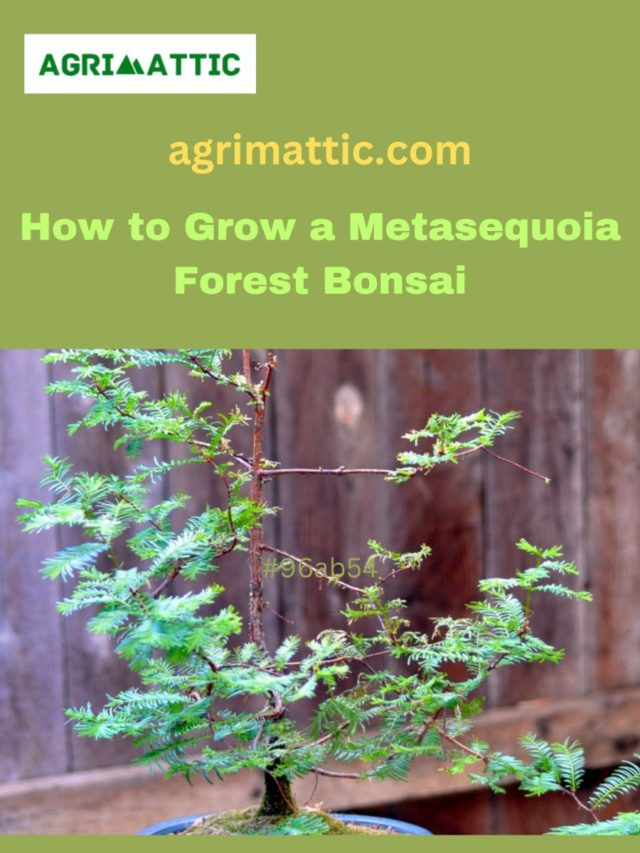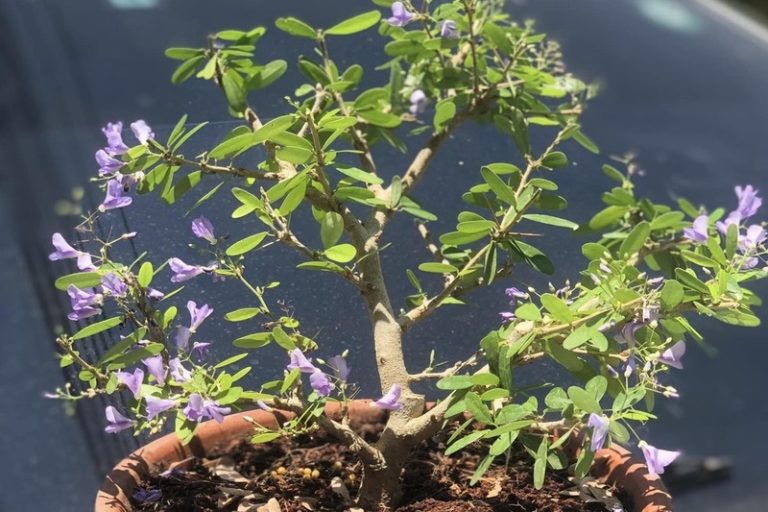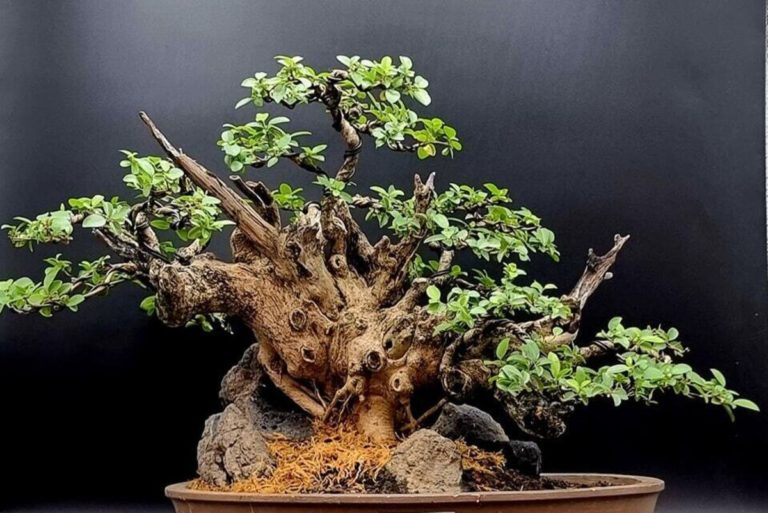Metasequoia Forest Bonsai: A Window to the Enchanting World of Bonsai
Bonsai trees have captured people’s hearts with their small beauty and aesthetic appeal. Among the different forms of bonsai, the Metasequoia forest bonsai stands out for its distinct attractiveness. In this article, we will dig into the realm of Metasequoia forest bonsai, learning what makes it unique and how to care for it.
What is Metasequoia Forest Bonsai?
Metasequoia forest bonsai is a style of bonsai that replicates a miniature forest using multiple metasequoia (dawn redwood) trees. These trees have reddish-brown bark and delicate, feathery foliage. By carefully arranging the trees in a container, bonsai enthusiasts create a harmonious and balanced composition that resembles a natural forest. Cultivating metasequoia forest bonsai involves selecting appropriate containers and soil, regular pruning, proper watering and fertilization, and ensuring adequate sunlight. The result is a captivating and serene miniature forest that brings the beauty of nature into any space.
History and Origins of Metasequoia Forest Bonsai
The care and enjoyment of bonsai trees in general may be traced back to the roots of Metasequoia forest bonsai. The art form of bonsai started in China over a thousand years ago and moved to Japan and other areas of the world subsequently.
Metasequoia forest bonsai specifically emerged as a unique style in the mid-20th century. It coincided with the discovery of living metasequoia trees, previously thought to be extinct, in the remote regions of China in the 1940s. These remarkable living fossils, known as metasequoia or dawn redwoods, sparked great interest among botanists and bonsai enthusiasts.
The discovery of metasequoia trees led to their introduction into the world of bonsai. Enthusiasts recognized the beauty and distinct characteristics of the metasequoia, including its reddish-brown bark and delicate foliage, making it a captivating species to cultivate as bonsai. Inspired by the idea of creating miniature forests, bonsai artists began arranging multiple metasequoia trees in a single container, thus giving rise to the style known as metasequoia forest bonsai.
The appreciation for metasequoia forest bonsai increased alongside the popularity of bonsai. Bonsai exhibits and events began to include these enthralling tiny woods, highlighting their distinct charm and artistic appeal. Today, bonsai fans all around the world adore and produce metasequoia forest bonsai, which adds a touch of natural beauty and tranquillity to the art of bonsai.
Metasequoia Forest Bonsai and Their Symbolism
Metasequoia forest bonsai holds symbolism and deeper meaning beyond its aesthetic appeal. Here are some aspects of symbolism associated with metasequoia forest bonsai:
1. Resilience: Metasequoia trees are known as living fossils because they were thought to be extinct until their rediscovery. This resilience and ability to survive over millions of years symbolize strength and endurance. Metasequoia forest bonsai, with its depiction of multiple trees thriving together, embodies the idea of resilience and the ability to overcome challenges.
2. Connection with Nature: Bonsai, in general, implies a connection with nature and harmony between humans and the natural world. Metasequoia forest bonsai, in particular, conveys a sensation of being in a little forest, bringing the peace and beauty of nature into our living spaces. It acts as a reminder of our reliance with the natural world and the need to nurture and safeguard it.
3. Unity and Balance: A metasequoia forest bonsai’s beautiful arrangement of numerous metasequoia trees represents unity and balance. Each tree adds to the overall composition, resulting in a harmonic whole. This symbolism represents the necessity of balance in our lives, as well as the knowledge that a community’s power is derived from the collaboration and support of its individual members.
4. Longevity and Wisdom: Metasequoia trees have a long lifespan, and their ancient lineage symbolizes wisdom and timelessness. Metasequoia forest bonsai, with its portrayal of these enduring trees, carries the symbolism of wisdom gained through experience and the appreciation of the value of time.
5. Serenity and Tranquility: The presence of a metasequoia forest bonsai can evoke a sense of calmness and serenity. The miniature forest, with its carefully arranged trees, invites contemplation and a connection to nature. It serves as a peaceful focal point, providing a sanctuary of tranquility amidst the hectic pace of modern life.
With its symbolism of persistence, connection with nature, oneness, wisdom, and calm, Metasequoia forest bonsai not only adds visual beauty but also gives a deeper reflection on our relationship with the natural world and the traits we aspire to nurture in our life.
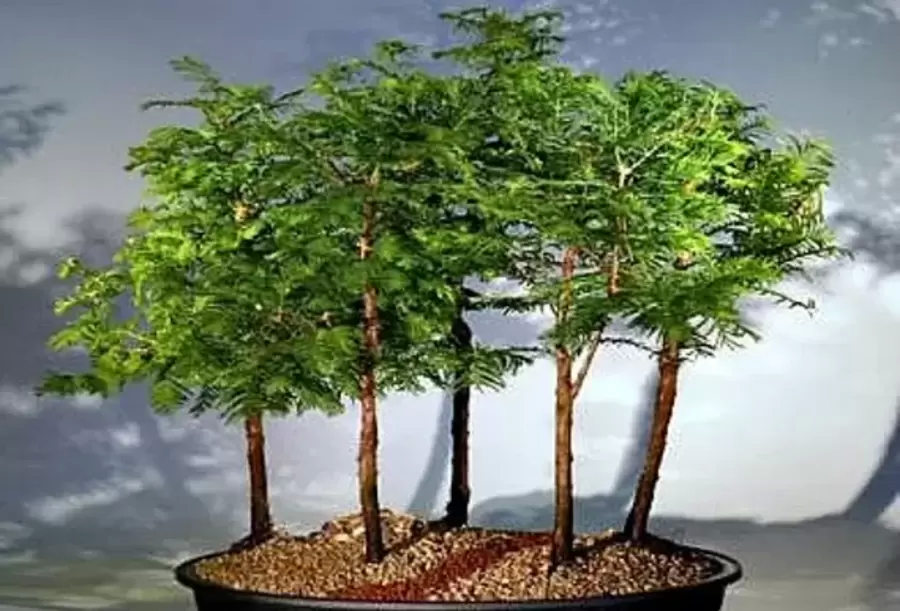
Characteristics of the Metasequoia Forest Bonsai
Metasequoia forest bonsai exhibits several distinctive characteristics that set it apart from other bonsai styles. Here are some key features of metasequoia forest bonsai:
Miniature Forest Effect: The formation of a small forest is the major feature of metasequoia forest bonsai. Multiple Metasequoia trees are meticulously planted in a single container to resemble a natural forest. The trees are arranged at various heights and angles to provide a feeling of depth and a realistic forest-like impression.
Reddish-Brown Bark: Metasequoia trees are known for their beautiful reddish-brown bark. This unique characteristic is retained in metasequoia forest bonsai, adding visual interest and texture to the overall composition. The color and texture of the bark contribute to the authenticity and realism of the miniature forest.
Delicate Feathery Foliage: The foliage of metasequoia trees consists of delicate, feathery needles that are bright green in color. In metasequoia forest bonsai, the foliage is meticulously pruned and maintained to create a dense and compact canopy. The intricate foliage enhances the aesthetic appeal and adds a touch of elegance to the bonsai.
Harmonious Arrangement: Metasequoia forest bonsai strives for a harmonious and balanced arrangement of the trees. The trees are positioned in a way that creates a pleasing visual composition, considering factors such as height variation, spacing, and angles. This balanced arrangement reflects the natural harmony found in forests and brings a sense of tranquility to the bonsai.
Realistic Naturalistic Styling: Metasequoia forest bonsai aims to replicate the appearance of a natural forest on a small scale. The styling techniques used in this bonsai style focus on creating a realistic and naturalistic representation of a forest. The trees may exhibit variations in trunk thickness, branch structure, and foliage density to mimic the diversity found in a real forest.
Serene and Tranquil Aesthetic: Metasequoia forest bonsai exudes a serene and tranquil aesthetic. The miniature forest, with its carefully arranged trees and naturalistic styling, creates a sense of calmness and peacefulness. It offers a glimpse into the beauty and serenity of nature, even in a compact and controlled environment.
These characteristics collectively contribute to the unique appeal of metasequoia forest bonsai, making it a captivating and sought-after style among bonsai enthusiasts.
Types of Metasequoia Forest Bonsai
There are various types of Metasequoia forest bonsai, each offering a distinct variation in composition and aesthetic appeal. Here are a few common types:
Traditional Metasequoia Forest Bonsai: This type follows a more traditional approach to the composition, featuring a group of metasequoia trees arranged in a naturalistic style. The trees are positioned at varying heights and angles, mimicking the look of a mature forest. The emphasis is on creating a harmonious and balanced arrangement.
Group Planting Bonsai: In this type, a mix of metasequoia trees and other complementary bonsai species are combined to create a diverse and visually interesting composition. The inclusion of different tree species adds contrast in foliage color, texture, and overall form, resulting in a more dynamic and captivating metasequoia forest bonsai.
Forest Landscape Bonsai: Forest Landscape Metasequoia Bonsai takes the concept of the miniature forest to a higher level by incorporating additional elements like rocks, moss, and ground cover plants. These elements simulate the landscape surrounding the metasequoia trees, creating a more immersive and realistic forest environment.
Cascade Style Metasequoia Forest Bonsai: This type features metasequoia trees cascading down from the edge of a container, creating a vertical and cascading effect. The trees are arranged in a way that resembles a waterfall or a cliffside forest. This style adds a dramatic and dynamic element to the metasequoia forest bonsai, showcasing the tree’s flexibility and adaptability.
Multi-Trunk Metasequoia Bonsai: Multi-trunk metasequoia forest bonsai focuses on showcasing the beauty of the tree’s trunk structure. Multiple trunks of Metasequoia trees are carefully arranged to create a visually appealing composition. The emphasis is on the unique characteristics of each trunk, including taper, movement, and bark texture.
These are just a few examples of the types of metasequoia forest bonsai that can be created. Bonsai artists and enthusiasts often experiment with different combinations, arrangements, and styles to create their own unique interpretations of metasequoia forest bonsai.
How to Grow a Metasequoia Forest Bonsai
Growing a Metasequoia forest bonsai requires careful attention to several key steps. Here’s a guide on how to grow a Metasequoia forest bonsai:
- Select Suitable Trees: Start by acquiring healthy metasequoia trees. Choose young saplings or nursery-grown metasequoia trees that have good root systems and are well-suited for bonsai cultivation. Aim for trees with desirable trunk thickness and interesting bark texture.
- Container and Soil Preparation: Select shallow containers with sufficient drainage holes to promote good root health. Prepare a well-draining soil mixture suitable for bonsai by combining components such as akadama, pumice, and lava rock. This mixture allows for adequate water retention while preventing waterlogged roots.
- Planting the Trees: Carefully plant the metasequoia trees in the container, spacing them evenly to create a natural forest-like arrangement. Gently spread out the roots while ensuring they are not excessively cramped. Position the trees at varying heights and angles to add depth and visual interest.
- Pruning and Shaping: Regular pruning is essential for maintaining the shape and size of the metasequoia forest bonsai. Use sharp bonsai tools to trim back branches and foliage, encouraging compact growth and desired branching patterns. Trim excess growth to maintain the overall balance and aesthetics of the bonsai.
- Watering and Fertilizing: Metasequoia forest bonsai requires consistent watering to keep the soil moist but not waterlogged. Water thoroughly when the soil starts to dry out, ensuring that water reaches the entire root system. Fertilize the bonsai during the growing season using a balanced, slow-release bonsai fertilizer to provide essential nutrients.
- Sunlight and Temperature: Metasequoia trees prefer full sun to partial shade. Place the metasequoia forest bonsai in a location that receives adequate sunlight, preferably in a spot with morning sun and afternoon shade. Protect the bonsai from extreme temperatures, especially during the winter, by providing appropriate winter protection.
- Repotting: Repot the metasequoia forest bonsai every two to three years to promote healthy root growth. Repotting is typically done in the early spring before new growth emerges. During repotting, trim back any excessive roots and refresh the soil mixture to ensure optimal nutrient absorption.
- Winter Care: Protect the metasequoia forest bonsai from freezing temperatures during the winter. Move the bonsai to a sheltered location or use protective coverings like frost blankets or a cold frame. Avoid exposing the bonsai to extreme temperature fluctuations or icy conditions.
- Regular Maintenance: Continuously monitor the health and growth of the metasequoia forest bonsai. Check for pests, diseases, or signs of stress, and take appropriate measures if any issues arise. Regularly prune, shape, and wire the branches to maintain the desired form and aesthetics of the bonsai.
By following these steps and providing proper care, you can successfully grow and maintain a beautiful metasequoia forest bonsai, bringing the charm of a miniature forest into your bonsai collection.
Benefits of Metasequoia Forest Bonsai
Metasequoia forest bonsai offers several benefits that make it a popular choice among bonsai enthusiasts. Here are some key benefits of growing metasequoia forest bonsai:
1. Aesthetic Beauty: Metasequoia forest bonsai showcases the captivating beauty of miniature forests. The arrangement of multiple metasequoia trees in a single container creates a visually striking composition that can serve as a focal point in any space. The reddish-brown bark, delicate foliage, and harmonious arrangement of the trees combine to create a stunning display of natural artistry.
2. Relaxation and Serenity: The presence of a metasequoia forest bonsai can create a serene and tranquil atmosphere. The miniature forest evokes a sense of calmness and brings the soothing qualities of nature into your living space. The act of caring for and observing the bonsai can also provide a therapeutic and meditative experience.
3. Educational and Historical Value: Metasequoia trees have a fascinating history as living fossils, having been thought to be extinct until their rediscovery. Growing Metasequoia forest bonsai allows you to engage with and learn about this ancient species. It provides an opportunity to appreciate the resilience and longevity of these trees while connecting with the natural world.
4. Bonsai Cultivation Skills: Growing and sustaining a metasequoia forest bonsai necessitates the development of several bonsai cultivation abilities. Pruning, shaping, wiring, and repotting are all part of the process. Bonsai lovers may improve their bonsai cultivation skills and aesthetic abilities by practicing these approaches.
5. Space Efficiency: The splendor of a forest may be brought into a compact and regulated setting with Metasequoia forest bonsai. It is a wonderful choice for people who have limited outdoor space or who wish to appreciate the beauties of nature within. The bonsai’s diminutive size makes it ideal for displaying on tabletops, shelves, or any small place.
6. Conversation Starter: Metasequoia forest bonsai can be a great conversation starter and a unique piece of décor. Its intriguing appearance and the story behind metasequoia trees can spark interesting discussions about bonsai, nature, and the history of these remarkable trees. It can serve as a focal point in social gatherings and a source of admiration for guests.
7. Personal Connection with Nature: Cultivating and caring for a metasequoia forest bonsai allows you to establish a personal connection with nature. It provides an opportunity to nurture and appreciate the beauty of trees and the natural world, even in miniature personal connection with nature. It provides an opportunity to nurture and appreciate the beauty of trees and the natural world, even in miniature. The process of tending to the bonsai can foster a deeper appreciation for the environment and our role in its preservation.
These benefits make metasequoia forest bonsai a rewarding and enriching experience for bonsai enthusiasts, allowing them to enjoy the aesthetic beauty, tranquility, and educational value associated with this unique bonsai style.
Styling and Design of a Metasequoia Forest Bonsai
The styling and design of a metasequoia forest bonsai involve careful consideration of various elements to create a harmonious and visually appealing composition. Here are some key aspects to focus on when styling and designing a metasequoia forest bonsai:
Trunk Selection: Choose metasequoia trees with interesting trunk characteristics, such as taper, movement, and bark texture. The trunks should vary in thickness and direction to create a natural and dynamic forest-like appearance.
Branching Structure: Establish a well-balanced and aesthetically pleasing branching structure for each tree in the metasequoia forest bonsai. Ensure that the branches radiate in different directions, mimicking the branching patterns found in a real forest. Prune and wire the branches to enhance their shape and create a sense of depth within the composition.
Height Variation: Create visual interest and depth by positioning the trees at different heights. Place taller trees towards the back of the composition and gradually decrease the height towards the front. This variation in height adds realism to the miniature forest and gives a sense of perspective.
Angles and Spacing: Arrange the trees at different angles to mimic the natural growth patterns observed in forests. Avoid placing the trees in perfectly straight lines or symmetrical formations, as this can make the composition appear artificial. Additionally, leave adequate space between the trees to allow for light penetration and airflow.
Foliage Density: Maintain a balanced and appropriate foliage density for each tree. Thin out overcrowded foliage to allow light to reach inner branches and encourage growth in desired areas. Prune and trim the foliage regularly to maintain the overall shape and proportion of the bonsai.
Container Selection: Choose a shallow container that complements the size and style of the metasequoia forest bonsai. The container should provide a visually appealing backdrop without overshadowing the bonsai. Consider the color and texture of the container to enhance the overall aesthetic appeal of the composition.
Naturalistic Arrangement: Aim to create a naturalistic and realistic arrangement of the metasequoia trees. Avoid symmetrical patterns and strive for a more organic and irregular layout, imitating the random growth patterns found in nature. This will contribute to a more visually pleasing and authentic forest-like appearance.
Balance and Proportion: Maintain the metasequoia woodland bonsai’s sense of balance and symmetry. Each tree should add to the overall composition without dominating or overshadowing the others. To maintain a harmonic and aesthetically appealing layout, consider the size and positioning of the trees in relation to one another.
Patience and Iteration: Creating a well-styled metasequoia forest bonsai takes time and patience. It often involves multiple iterations and adjustments as the trees grow and develop. Regular observation, pruning, and refinement are key to achieving the desired styling and design of the bonsai over time.
By paying attention to these styling and design aspects, you can create a visually captivating metasequoia forest bonsai that emulates the beauty and charm of a natural forest in miniature form.
How to Care for and Maintain a Metasequoia Forest Bonsai
Caring for and maintaining a metasequoia forest bonsai requires attention to several important aspects. Here are some essential care guidelines to keep your metasequoia forest bonsai healthy and thriving:
- Watering: Ensure proper watering by keeping the soil consistently moist but not waterlogged. Check the moisture level by inserting a finger into the soil, and water thoroughly when the top inch feels slightly dry. Avoid overwatering or allowing the soil to dry out completely, as both can be detrimental to the health of the bonsai.
- Sunlight: Full sun to moderate shade is preferred for metasequoia trees. Put your metasequoia forest bonsai somewhere that gets at least 6-8 hours of direct sunshine every day. Provide some cover during the warmest part of the day if the sun is unusually strong in your region to prevent leaf scorch.
- Temperature and Climate: Metasequoia trees are hardy and can tolerate a wide range of temperatures. However, they prefer cool to moderate climates. Protect the bonsai from extreme heat or freezing temperatures. During winter, consider providing winter protection by moving the bonsai to a sheltered location or using a cold frame or frost blankets.
- Pruning and Trimming: Regular pruning is necessary to maintain the shape and size of the metasequoia forest bonsai. Prune back long branches and remove any unwanted growth to promote balanced growth and maintain the desired form of the bonsai. Pruning is typically done during the dormant season or in the early spring before new growth appears.
- Fertilization: Feed your metasequoia forest bonsai with a balanced bonsai fertilizer during the growing season. Follow the manufacturer’s instructions for dosage and application frequency. Fertilizing provides essential nutrients for healthy growth and the overall vigor of the bonsai.
- Repotting: Metasequoia forest bonsai should be repotted every two to three years to prevent root congestion and maintain optimal root health. Repotting is typically done in the early spring before new growth starts. Trim back any excessively long roots, refresh the soil mixture, and place the bonsai back into a slightly larger container.
- Pests and Diseases: Inspect your metasequoia forest bonsai on a regular basis for pests such as aphids, spider mites, and scale insects. If pests are discovered, take the necessary steps to manage and destroy them. In addition, look for symptoms of illness or fungal infection, such as discolouration or withering leaves. Address any concerns as soon as possible to avoid additional damage.
- Wiring and Styling: As your metasequoia forest bonsai grows, periodically wire and style the branches to maintain the desired shape and form. Use bonsai wire to gently guide the branches into the desired position. Avoid leaving the wire on for too long to prevent wire marks from forming.
- Regular Observation and Care: Regularly observe your metasequoia forest bonsai for any changes in growth, health, or appearance. Adjust your care routine accordingly to address any issues or specific needs of the bonsai. Take the time to appreciate and enjoy the beauty of your bonsai as you care for it.
By following these care guidelines and providing proper attention and maintenance, you can ensure the health and vitality of your metasequoia forest bonsai, allowing it to thrive and bring beauty to your surroundings for years to come.
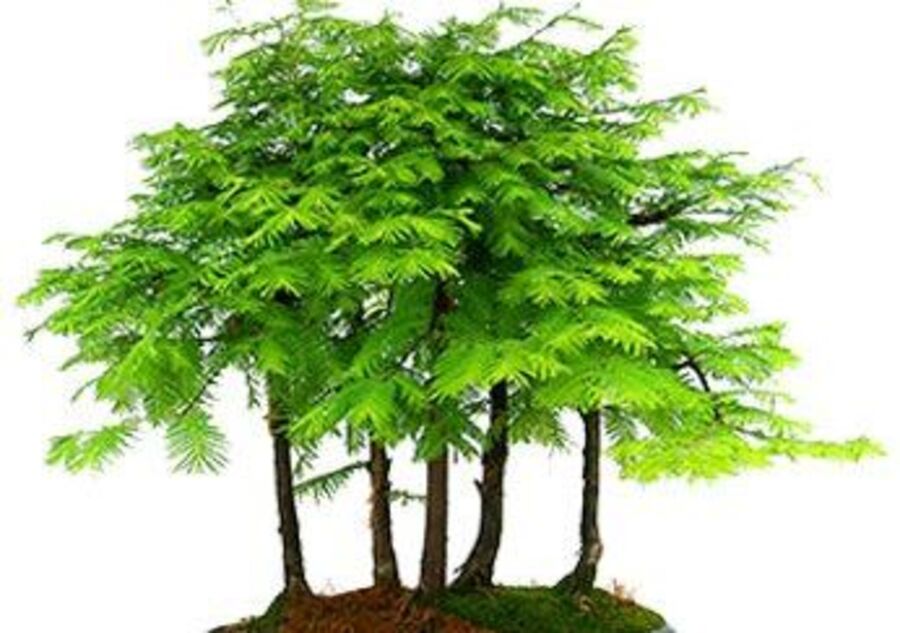
Metasequoia forest bonsai Care Sheet
| Aspect | Care Tips |
| Watering | Keep the soil consistently moist, but avoid overwatering. |
| Check the moisture level by inserting a finger into the soil. Water thoroughly when the top inch feels dry. | |
| Sunlight | Place in a location that receives 6-8 hours of direct sunlight per day. |
| Provide some shade during the hottest part of the day in intense sun conditions. | |
| Temperature | Metasequoia trees are hardy but prefer cool to moderate climates. |
| Protect from extreme heat and freezing temperatures. | |
| Humidity | Metasequoia bonsai can tolerate normal room humidity levels. |
| Fertilization | Feed with a balanced bonsai fertilizer during the growing season. |
| Follow the manufacturer’s instructions for dosage and application frequency. | |
| Pruning and Trimming | Regularly prune to maintain shape and size. |
| Remove long branches and unwanted growth. | |
| Wiring and Styling | Wire and style branches to maintain desired shape. |
| Use bonsai wire and remove it before it leaves marks. | |
| Repotting | Repot every 2-3 years to prevent root congestion. |
| Trim back excessively long roots and refresh soil mixture. | |
| Pest and Disease Control | Regularly inspect for pests and diseases. |
| Take appropriate measures to control and eliminate pests. | |
| Winter Care | Provide winter protection from freezing temperatures. |
| Move to a sheltered location or use frost blankets or cold frames. | |
| Regular Maintenance | Regularly observe for changes in growth, health, and appearance. |
| Adjust care routine as needed. |
Remember, each bonsai is unique, and the care requirements may vary slightly based on individual factors. Regular observation, adjustment, and care will help ensure the health and vitality of your metasequoia forest bonsai.
Conclusion:
Metasequoia forest bonsai offers a unique and captivating experience for bonsai enthusiasts. By understanding the basics of cultivation, styling, and care, you can create a stunning miniature forest in your own home or garden. Embrace the beauty of metasequoia forest bonsai and let its serene charm bring joy and tranquility to your life.
FAQ:
Q: What is Metasequoia Forest Bonsai?
A: Metasequoia Forest Bonsai is a bonsai style that involves creating a miniature forest using Metasequoia trees. It mimics the appearance of a natural forest in a small container, showcasing the beauty and serenity of a woodland setting.
Q: How many trees are typically used in a Metasequoia Forest Bonsai?
A: A Metasequoia Forest Bonsai usually consists of multiple trees. The number can vary, but commonly, three to seven trees are used to create a balanced and visually appealing composition.
Q: What are the symbolic meanings associated with Metasequoia Forest Bonsai?
A: Metasequoia Forest Bonsai symbolizes harmony, unity, and the beauty of nature. It represents the tranquility and serenity of a forest setting and can evoke a sense of peace and relaxation.
Q: How do I care for a Metasequoia Forest Bonsai?
A: Proper care for a Metasequoia Forest Bonsai involves watering it regularly, providing adequate sunlight, maintaining the right temperature and humidity, fertilizing during the growing season, pruning and styling, repotting every few years, and controlling pests and diseases.
Q: Can I grow a Metasequoia Forest Bonsai indoors?
A: Yes, it is possible to grow a Metasequoia Forest Bonsai indoors. However, it is important to provide sufficient light and ensure proper care to meet the tree’s needs. A location near a bright window or supplemental grow lights can help provide the necessary light conditions.
Q: How long does it take for a Metasequoia Forest Bonsai to mature?
A: The time it takes for a Metasequoia Forest Bonsai to develop might vary based on several factors, including the age of the trees utilized, the species’ growth rate, and the care offered. It may take several years for the bonsai to obtain the required traits and mature look.
Q: Can I create my own Metasequoia Forest Bonsai or should I buy a pre-made one?
A: You can create your own Metasequoia Forest Bonsai by selecting suitable trees, arranging them in a pleasing composition, and providing proper care and maintenance. Alternatively, pre-made Metasequoia Forest Bonsai may be available for purchase from bonsai nurseries or online sellers.
Q: Where can I find Metasequoia trees for my bonsai?
A: Metasequoia trees can be found at bonsai nurseries, garden centers, or online stores specializing in bonsai supplies. They may be sold as individual trees or as part of a Metasequoia Forest Bonsai starter kit.
Also Read:


